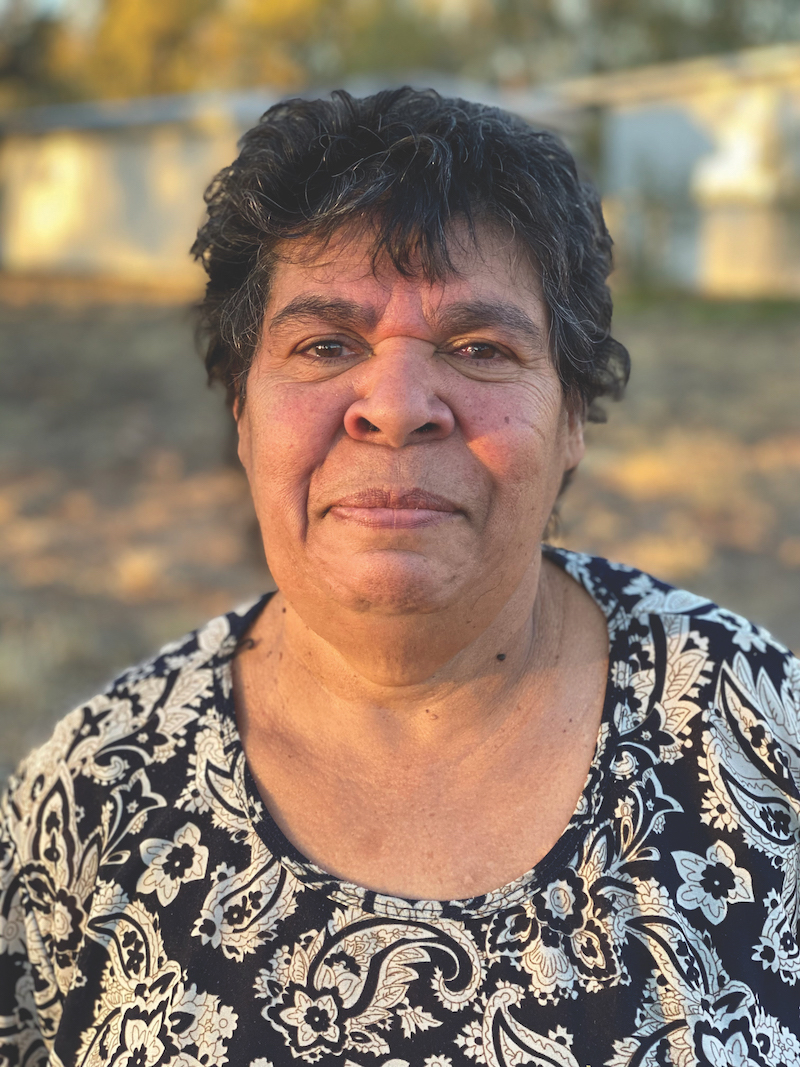When and how did you first fall in love with art?
It’s not a matter of falling in love with art, it has always been part of our culture to educate young people at the earliest age about their family history, along with the practical side of survival. The images I lay down relate to food and water sources along with strict ceremonial law.
What is special about where you paint?
Currently I am based in Alice Springs, due to the fact I was the sole carer of the late Yannima Pikarli Tommy Watson. During my uncle’s later years he needed to be close to medical facilities, but I returned to my Country to visit family and attend ceremonies, which I am obliged to by law.
How long have you been practicing as an artist?
I started painting in 1983 at Warakurna WA, in the Shire of Ngaanyatjarraku. I was working as a teacher’s aide at the local school there. This helped me maintain my cultural links to Country which I used as an educational tool while working at the school.
What is your work about – does it tell a particular story?
With all traditional people like myself, it can only be about Ngayuku Ngura, My Country, and obviously I cannot paint another person’s Country, or Tjukurpa (dreaming). All my paintings, along with all traditional artists, have a particular story. We cannot make up designs, and we must be given permission from our elders – like all Indigenous artists. Recently I have been painting Ngintaka-Perentie Lizard and Walpa-wind Tjukurpa, (dreamings).
Where do you find inspiration?
We are born with the inspiration; the physical instruction of the iconography was handed down from a very early age from my mothers and grandmothers. Our first instructions are usually laid down with simple finger drawings in the sand and this is repeated numerous times by our elders to reinforce our memory of storylines. In our culture we can have a number of mothers, it is not in the context of European society.
What materials do you use and why?
I use acrylic paint on Belgian linen, since the introduction of modern art materials has made my art, and all traditional artists work, permanent and transportable.
What do you hope people will take away from viewing your work?
The only thing I wish for people to take away is the beauty and mystery of Aboriginal art. I cannot disclose the full content of my stories to women who are not initiated, whether Indigenous or non-Indigenous. So people must bare with me and not ask too many probing questions, which by law I cannot answer.

